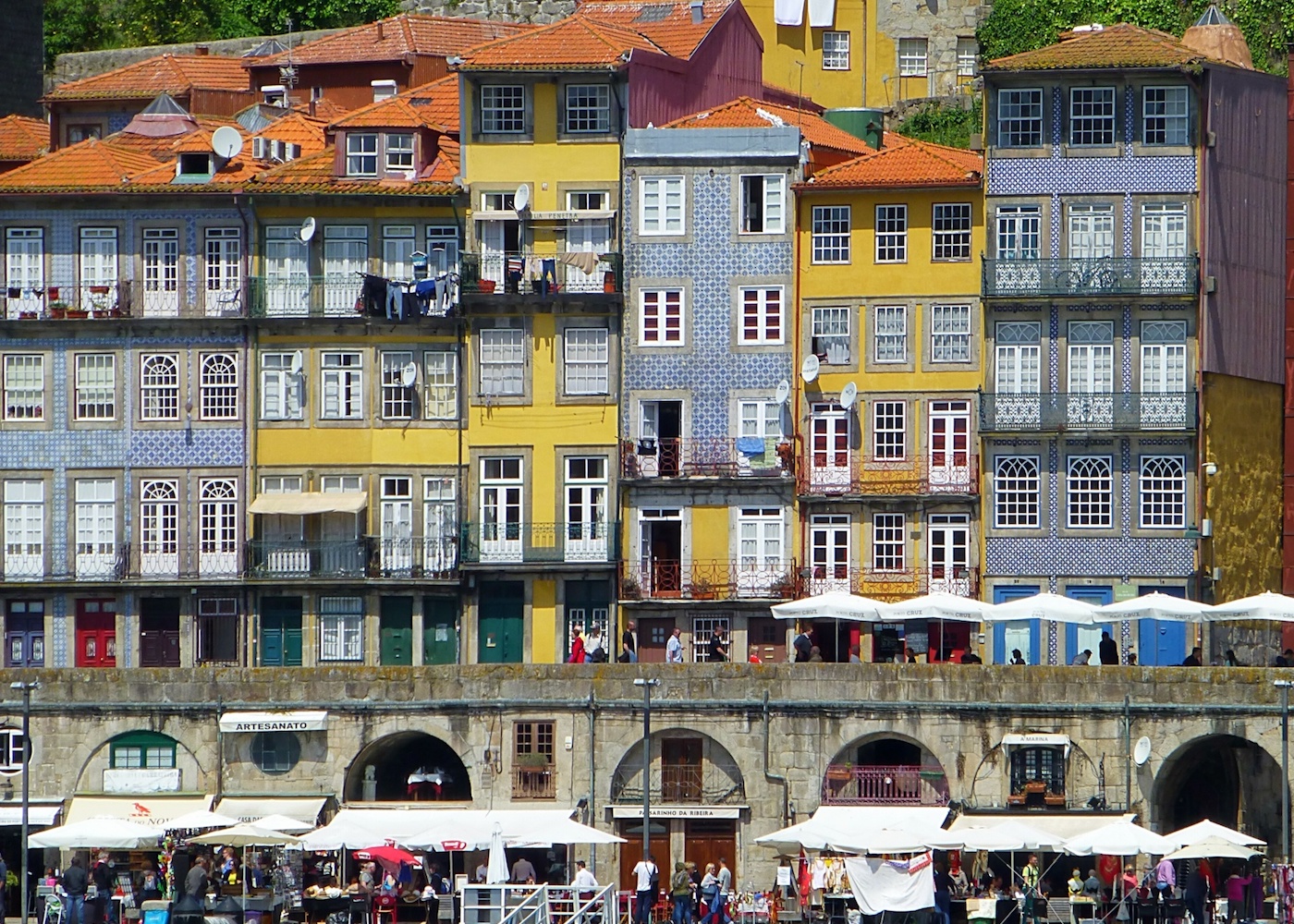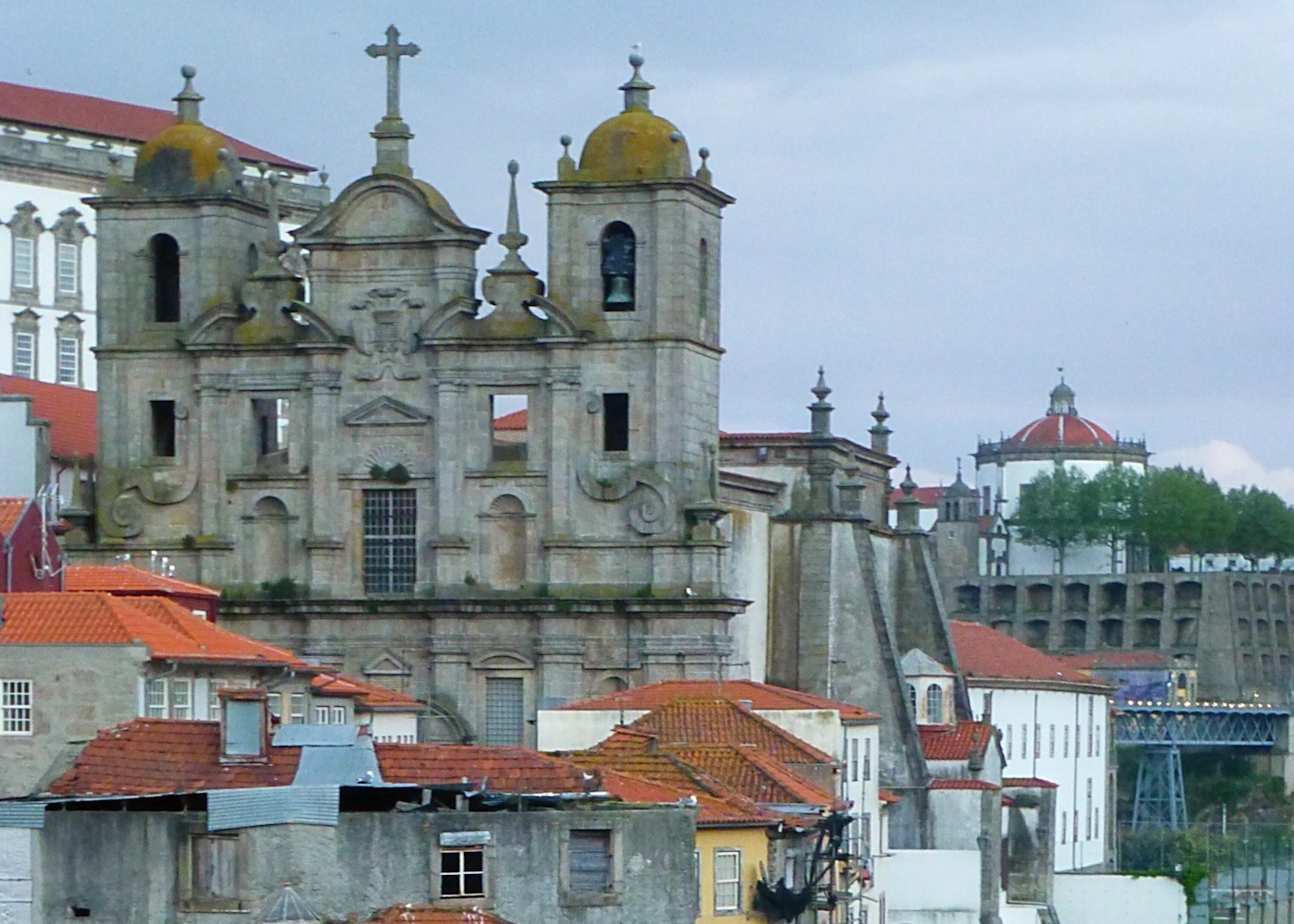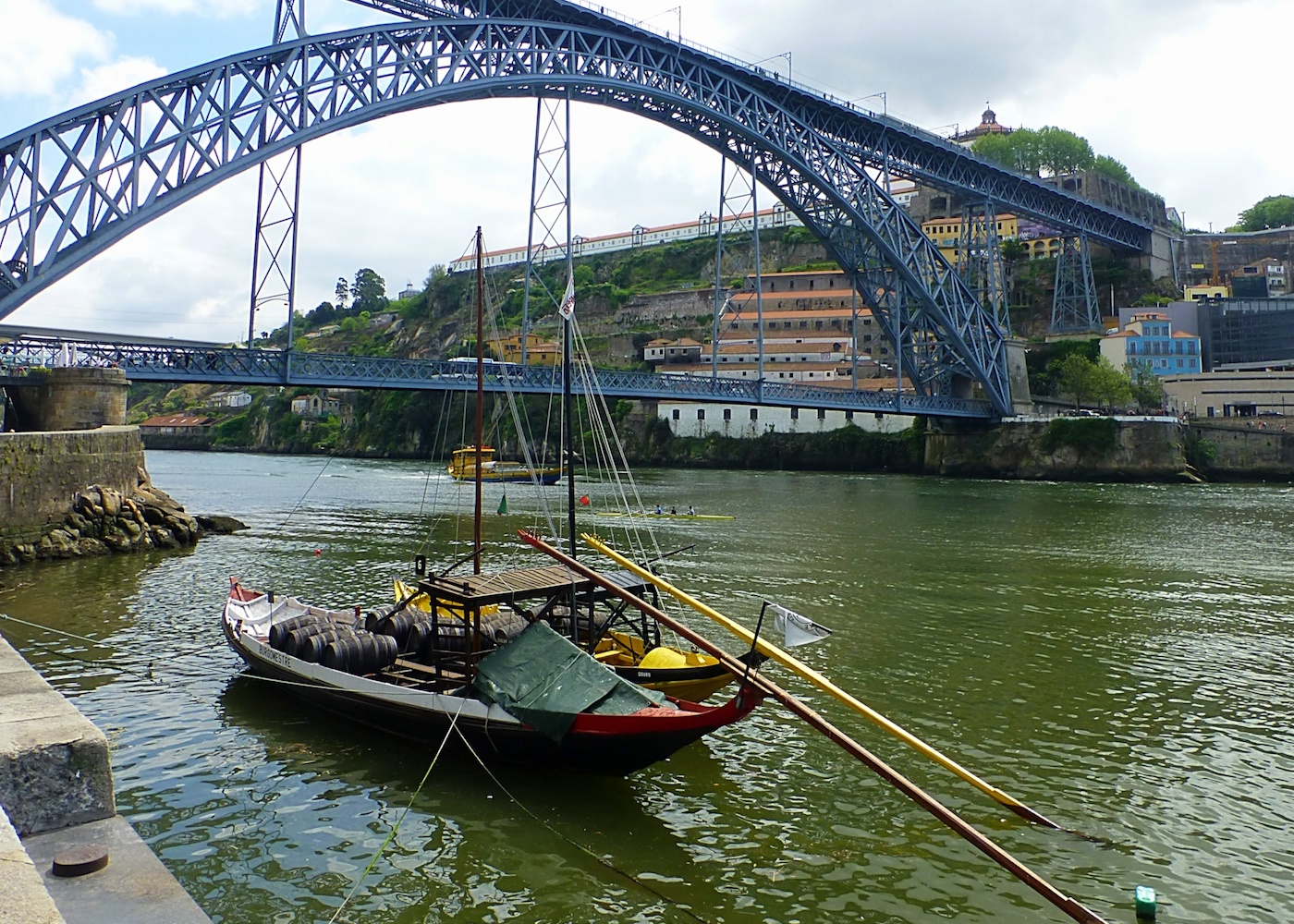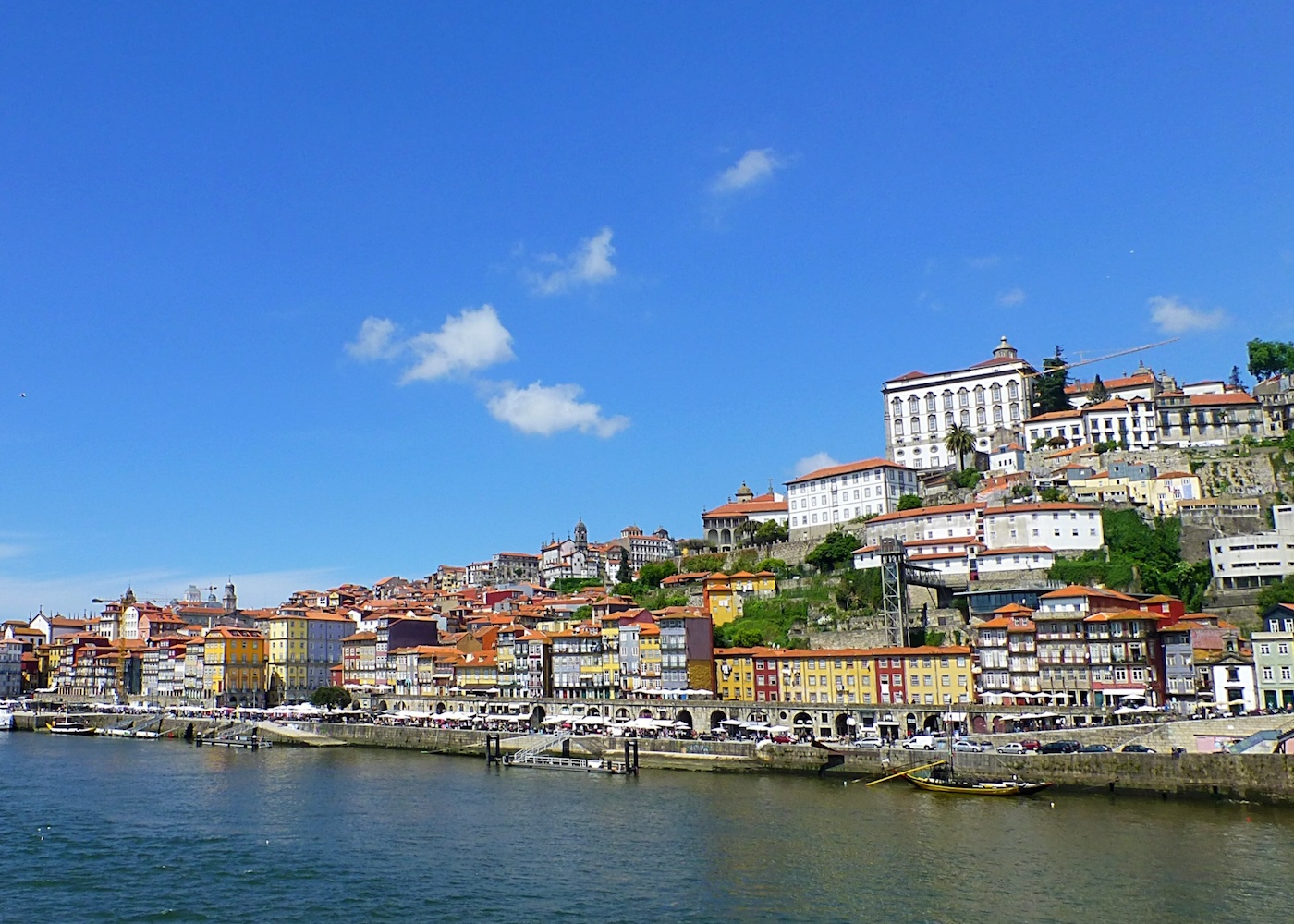
We took a detour because of a bookshop and fell in love with a city. We had read somewhere about Livraria Lello, reputed to be one of the most beautiful bookshops in the world, and the memory had lingered. All readers find book shops irresistible, so a three-hour train trip from Lisbon to Porto seemed to us like a perfectly reasonable diversion.

And so it was. But we didn’t yet know that Porto (only the English call it Oporto) would embrace us with its other charms and that we would find another excuse to return just 12 months later.
Trains had already taken us through Spain and friends had driven us up to Lisbon. This short rail journey provided us a chance to observe changes in the Portuguese landscape as we headed north. The southern Algarve region could be Australia with scrubby vegetation, sandy, uncrowded, beautiful surf beaches, wattle, bottlebrushes and eucalypts. And there’s heat, even in springtime. Then we passed through a much more European countryside, lush and green and damp, with glimpses of Baroque architecture as we sped by.

The taxi driver at Porto-Campanhã station took us into town the long way. Not to give us the tour, we realised later, but to maximise his fare. It doesn’t matter. Otherwise our first glimpses of this riverside, World Heritage city would have been merely suburban. Instead we skirt the Douro river, passing bridges that turned out to be practice pieces for Gustav Eiffel, built before his famous tower, but bearing all its iron-laced hallmarks. Rabelos, the traditional Portuguese cargo boats, puttered up and down the river on our left and the buildings of the old town scrambled up the hillside to our right. This taciturn driver could not have given us a better introduction.

We’ve never been disappointed by accommodation chosen in an old town of a European city. In Porto it was a studio apartment at the very top of a building in a major square, Largo San Domingo. Fortunately there was a lift, tiny and creaky, and we judder up to be greeted by views of rooftops that can only be found in old Europe. The Cathedral lies beyond in the most elevated position of this hilly city.
We asked our host José where the famous bookshop is. He has brought cold vinho verde, a delicious young white wine from the region, and we sipped it together as he whipped out a map, then proceeded to tell us what else we must not miss. He points out Macdonalds. We look askance. “No, no,” he insisted. “It’s the most beautiful in the world.” What? Another ‘most beautiful’? We take his word and added it to our list. “Francesinhas,” he adds. Not a ‘most beautiful’ it turns out, but a local delicacy. We’re game. After a couple of other suggestions and armed with José’s advice, we squeezed into the lift again and explored the square below.

We visit d restaurants, cafes, shops and watched buskers, but it wasn’t until the next day that we’d have the best meal of our nine-week trip in the restaurant immediately below our apartment. A young woman played a hurdy-gurdy and danced a marionette, while her mega-cool young son held the hat. We were going to need a few more euro coins if all the entertainment in town was that good.
Pasteis de nata
, the divine (there’s no other word) Portuguese custard tarts, cram pastelaria
windows. The very best are in Lisbon, but these are not too far behind. We realised that our Australian versions can never be compared and we ate far too many while we had the chance.